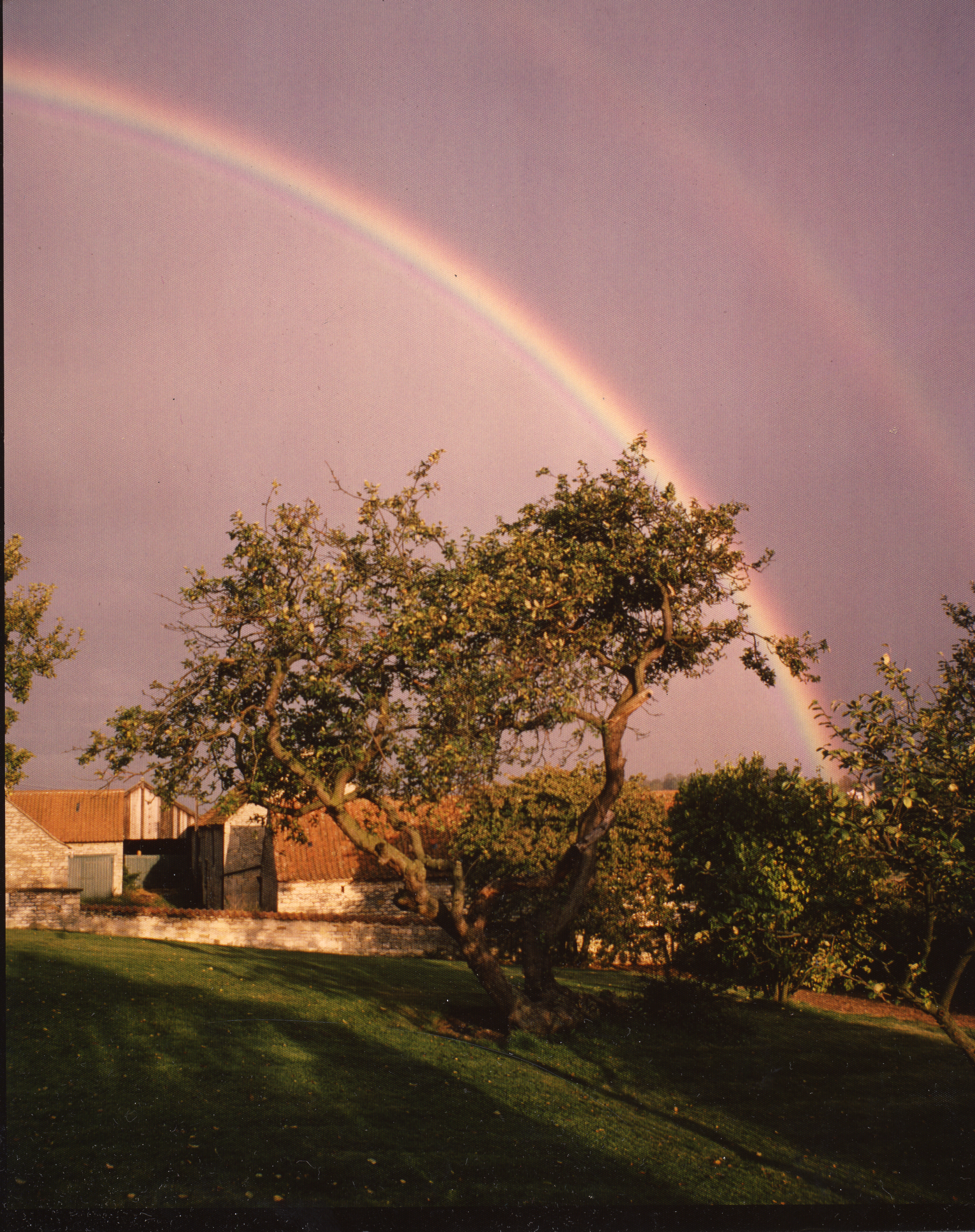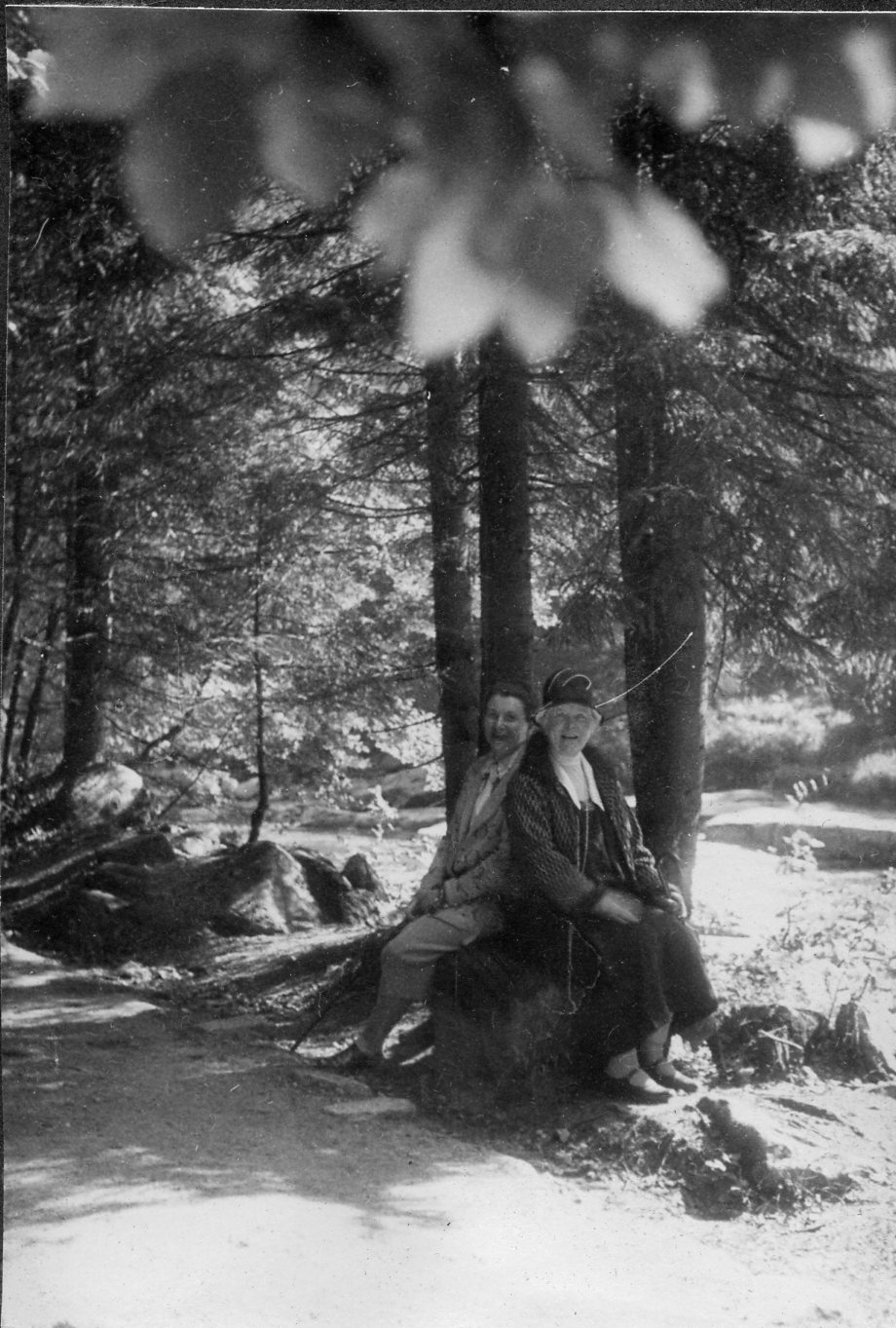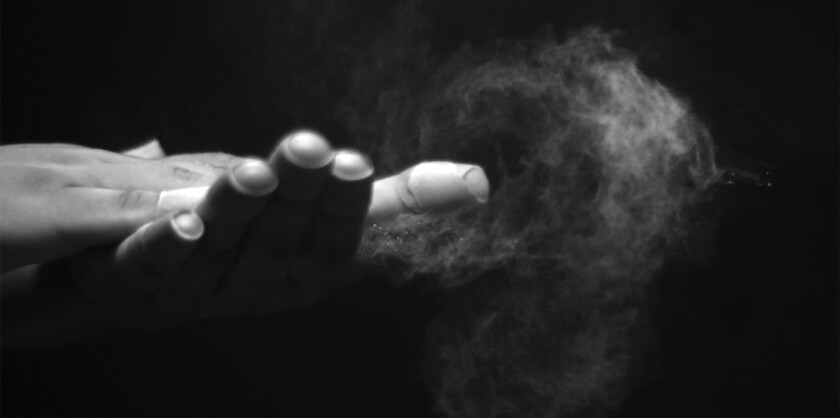Harvesting Scientific Inspiration

Flower of Kent apple on the NIST Newton Apple Tree at Gaithersburg, MD. June 3, 2024. PH2025-2951_014
Photo by Trevor Owens, courtesy of AIP Emilio Segrè Visual Archives.
As the leaves begin to change and the air turns crisp, it is once again harvest season and we consider a favorite fall fruit among physicists: the apple! September and October are the peak (or core) months of apple-picking season in the United States. For physical sciences, apples are not just a delicious fruit to eat or bake into a pie, but an emblem of the physical sciences enterprise itself.
This particular fruit has been indelibly associated with the field of physics since the propagation of the legendary story of Isaac Newton, resting and ruminating in his garden, being struck by scientific inspiration as he observed an apple fall from a tree. Some believe that an apple tree in the garden of Woolsthorpe Manor, Newton’s birthplace and family home, is the infamous source of revelation, and many history of science enthusiasts visit the site each year to appreciate the momentous setting. Roy Bishop

A rainbow over Sir Isaac Newton’s home and his famous apple tree at Woolsthorpe Manor, England. October 7, 1979. Newton Isaac H2
Photograph by Roy Bishop, Acadia University, courtesy of AIP Emilio Segrè Visual Archives.

Bishop’s photograph of the house was later used on a first day of issue cover (FDC

U.K. postage stamps on ‘Woolsthorpe Rainbow’ F.D.C. honoring Isaac Newton. March 24, 1987. Newton Isaac H11
Photograph by Roy Bishop, Acadia University, courtesy of AIP Emilio Segrè Visual Archives.
The apple tree believed by many to be Newton’s inspiration for his law of gravity is a variety called the Flower of Kent , however, the Flower of Kent is said to be maintained solely for its relationship with Newton and its role as a symbol for discovery and advancement in physics. Grafts deriving directly from the Woolsthorpe Manor tree have been dispersed across the world and planted in locations with the intention to grow inspiration in the physical sciences.
One can find grafts deriving from Newton’s Flower of Kent across the United States. The National Institute of Standards and Technology
In addition to research institutes and laboratories, universities and colleges also plant clones of Newton’s Flower of Kent, either next to the buildings that house their physics departments or elsewhere on campus. Several academic arboreal locations include MIT
So, as you enjoy the changing colors of the autumn, relaxing outdoors in the cool air, or biting into a crisp, perfectly ripe apple, remember that scientific inspiration may drop at any moment…

Hedwig Kohn and Frau Senftleben sitting by trees. Kohn Hedwig C24
AIP Emilio Segrè Visual Archives, gift of Dr. Wilhelm Tappe, Kohn Photo Collection.


Emilio Segrè and Lewis Edgar Agnew Jr. sitting outdoors enjoying a picnic. October, 1988. Segrè Emilio C17
AIP Emilio Segrè Visual Archives, Segrè Collection.
Do you have a Newton Flower of Kent on your campus or research site? We invite you to take a picture of yourself and your colleagues next to your tree and consider submitting it as a donation to the ESVA












